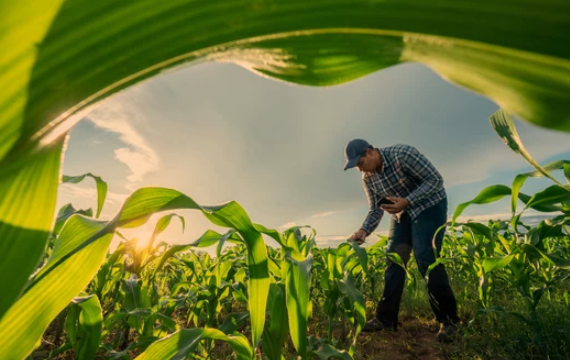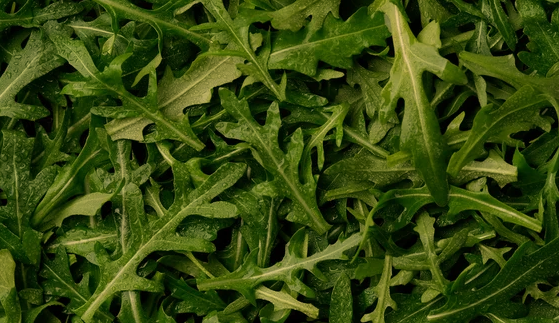The appeal of fall gardening tempts green-thumbed lovers to plant the seeds of a bountiful harvest as the days become shorter and the air gets chillier.
While spring and summer are the usual planting times, fall planting is a special chance to extend the gardening season and enjoy the benefits of fresh produce grown at home.
In this post, we’ll look at the advantages of planting veggies in the fall, examine the finest types of plants to think about, and offer crucial advice to make sure your garden thrives throughout this season of transition.
Fall Gardening Season

Fall Gardening Season
Before plunging into the world of fall gardening, it is crucial to grasp the nuances of this season. Fall planting is typically defined as the period after the peak of summer heat and before the first frost sets in. The timing varies depending on your geographic location, so knowing the average first frost date in your area is vital for planning.
Climate considerations play a significant role in determining the success of your fall garden. Understanding your region’s climate zone and the average temperatures during the fall will help you select suitable vegetables. While some regions experience mild and frost-free autumns, others face colder conditions, necessitating the use of season extenders like row covers and cold frames to protect tender plants.
Best Vegetables for Fall Planting

When it comes to fall gardening, certain vegetables thrive in the cooler temperatures and shorter days. These cold-hardy crops boast excellent adaptability and can endure light frosts, ensuring a successful harvest even as winter looms.
1). Leafy Greens: Kale, Spinach, Lettuce, and Arugula
Leafy greens are ideal for fall planting due to their ability to withstand colder temperatures and improve in flavor as the weather cools. Varieties like kale and spinach can endure temperatures as low as 20°F (-6°C) and continue to produce nutrient-rich leaves well into winter.
2). Root Vegetables: Carrots, Beets, Radishes, and Turnips
Root vegetables are another excellent choice for fall gardening. Carrots, beets, radishes, and turnips not only thrive in cool soil but also offer a sweet and crisp taste when grown in the fall. Properly mulching the soil will protect these underground delights from freezing and ensure a steady harvest throughout the season.
3). Cruciferous Vegetables: Broccoli, Cauliflower, and Brussels Sprouts
Cruciferous vegetables, such as broccoli, cauliflower, and Brussels sprouts, prefer cooler temperatures to develop their tight, delectable heads. By starting transplants indoors during late summer, you can achieve a head start for these plants before transferring them to the garden in early fall.
4). Alliums: Onions, Garlic, and Shallots
Alliums are a staple in many kitchens, and fall planting allows you to grow these flavorful bulbs for the following year. Planting onions, garlic, and shallots in the fall allows them to establish strong root systems, leading to robust growth in the spring.
Other Fall-Friendly Crops: Peas, Swiss Chard, and Cabbage
Peas, Swiss chard, and cabbage are additional fall-friendly crops that can thrive in the cooler months. While peas add a burst of sweetness to your fall meals, Swiss chard and cabbage offer a spectrum of vibrant colors and rich nutrients.
Planting Techniques for Fall Success

To achieve a successful fall garden, employing the right planting techniques is crucial. Whether you opt for direct seeding or transplants, timing and preparation are key.
Direct Seeding vs. Transplants
Direct seeding involves sowing seeds directly into the garden soil. While it is a cost-effective approach, some crops might not have enough time to mature before the first frost. Transplants, on the other hand, are young seedlings that are started indoors and then transplanted into the garden at a later stage. This method allows you to gain a head start and extends the growing period, increasing the likelihood of a successful harvest.
Using Season Extenders: Row Covers and Cold Frames
As the weather turns colder, using season extenders becomes crucial to safeguard your delicate plants from frost and freezing temperatures. Row covers, made from lightweight fabric, act as protective shields against pests and temperature fluctuations. Cold frames, on the other hand, are mini-greenhouses that trap heat and create a warmer microclimate for your plants.
Companion Planting to Boost Growth and Deter Pests
Implementing companion planting techniques can enhance the health and growth of your fall crops. For instance, planting marigolds around your vegetable beds can deter pests, while beans can enrich the soil with nitrogen, benefiting neighboring plants like broccoli and cabbage.
Essential Care and Maintenance
Just like any garden, a fall garden requires regular care and maintenance to thrive. Here are some essential tips to ensure your plants remain healthy and productive:
Watering and Irrigation in Cooler Weather
During fall, the weather tends to be cooler and more unpredictable. It is essential to monitor the moisture levels in the soil and water your plants accordingly. As the rate of evaporation decreases, be cautious not to overwater your garden. Using a soaker hose or drip irrigation system can efficiently deliver water directly to the roots while minimizing wastage.
Mulching to Conserve Moisture and Regulate Temperature
Mulching is a game-changer for fall gardening. Applying a thick layer of organic mulch, such as straw or shredded leaves, helps retain soil moisture, suppress weeds, and regulate soil temperature. Mulching also protects the roots of your vegetables during temperature fluctuations.
Fertilization for Healthy Growth and Nutrient-Rich Vegetables
To keep your fall vegetables thriving, providing them with the necessary nutrients is essential. Adding compost or well-balanced organic fertilizers to the soil will promote healthy growth and ensure your vegetables are rich in flavor and nutrients.
Protecting Your Fall Garden
A beautiful fall garden can be an inviting target for pests and unpredictable weather conditions. To protect your hard work, vigilance and preparation are crucial.
Recognizing and Managing Common Fall Pests
As the temperatures cool, some pests become more active and can pose a threat to your garden. Keep an eye out for aphids, cabbage worms, and other common fall pests. Employ natural pest control methods, such as handpicking, introducing beneficial insects, or using organic insecticides when necessary.
Preparing for Sudden Temperature Drops and Frosts
Autumn nights can bring unexpected temperature drops, posing a threat to frost-sensitive plants. Stay vigilant by monitoring weather forecasts regularly. When frost is predicted, cover tender plants with blankets, cloths, or specially designed frost protection fabrics.
Dealing with Potential Diseases in Cooler Conditions
Cool and moist conditions in the fall can create an environment conducive to plant diseases. To prevent the spread of infections, promptly remove and dispose of any infected plant material. Proper air circulation and mulching can also help prevent disease outbreaks.
Harvesting and Storing Fall Vegetables
The reward of fall gardening lies in the harvest of freshly grown, nutrient-packed vegetables. Knowing the right time to harvest and properly storing your produce will ensure you get the most out of your efforts.
Monitoring Maturity and Readiness for Harvest
Each vegetable has its specific indicators of ripeness. For leafy greens like lettuce and spinach, harvest leaves individually as they mature. Root vegetables, like carrots and beets, are ready when they reach the desired size and color. Cruciferous vegetables should be harvested before the heads become loose or open.
Harvesting Tips to Preserve Flavor and Texture
To maintain the best flavor and texture in your fall vegetables, harvest them during the cooler parts of the day. Use a sharp knife or garden scissors to cut leafy greens, and gently pull root vegetables from the ground to avoid damage.
Proper Storage Techniques to Prolong Shelf Life
Storing your fall harvest correctly ensures you can enjoy your bounty for weeks to come. Leafy greens and herbs should be lightly rinsed, dried thoroughly, and stored in airtight containers or plastic bags in the refrigerator. Root vegetables can be stored in a cool, dark place with high humidity, while cruciferous vegetables, like broccoli and cauliflower, can be refrigerated in perforated plastic bags.
Creative Uses for Fall Vegetables
Your fall harvest opens up a world of culinary possibilities. Embrace the flavors of the season with these creative uses for your freshly grown vegetables.
Fall-Inspired Recipes and Cooking Ideas
As the weather turns cooler, embrace the warmth and comfort of hearty soups, stews, and roasted vegetables. Explore recipes that incorporate your fall harvest, such as roasted root vegetable medleys or sautéed Swiss chard with garlic.
Preserving the Harvest: Canning, Freezing, and Pickling
If you find yourself with an abundance of fall vegetables, consider preserving them to enjoy throughout the year. Canning, freezing, and pickling are excellent ways to extend the life of your harvest and savor the flavors of fall during colder months.
Sharing the Bounty: Donating or Gifting Excess Produce
If your fall garden yields more than your household can consume, consider sharing your bounty with others. Donating fresh produce to local food banks or sharing with neighbors and friends fosters a sense of community and ensures that nothing goes to waste.
Conclusion
Fall planting vegetables is a rewarding and productive endeavor that allows you to continue nurturing your garden long after the summer season has passed. With the unique considerations of the fall gardening season, choosing the right vegetables, and employing proper planting techniques and care, you can extend your harvest and revel in the delights of homegrown goodness. Embrace the joys of fall gardening, and let the bounty of the season nourish your body and soul. Happy gardening!




